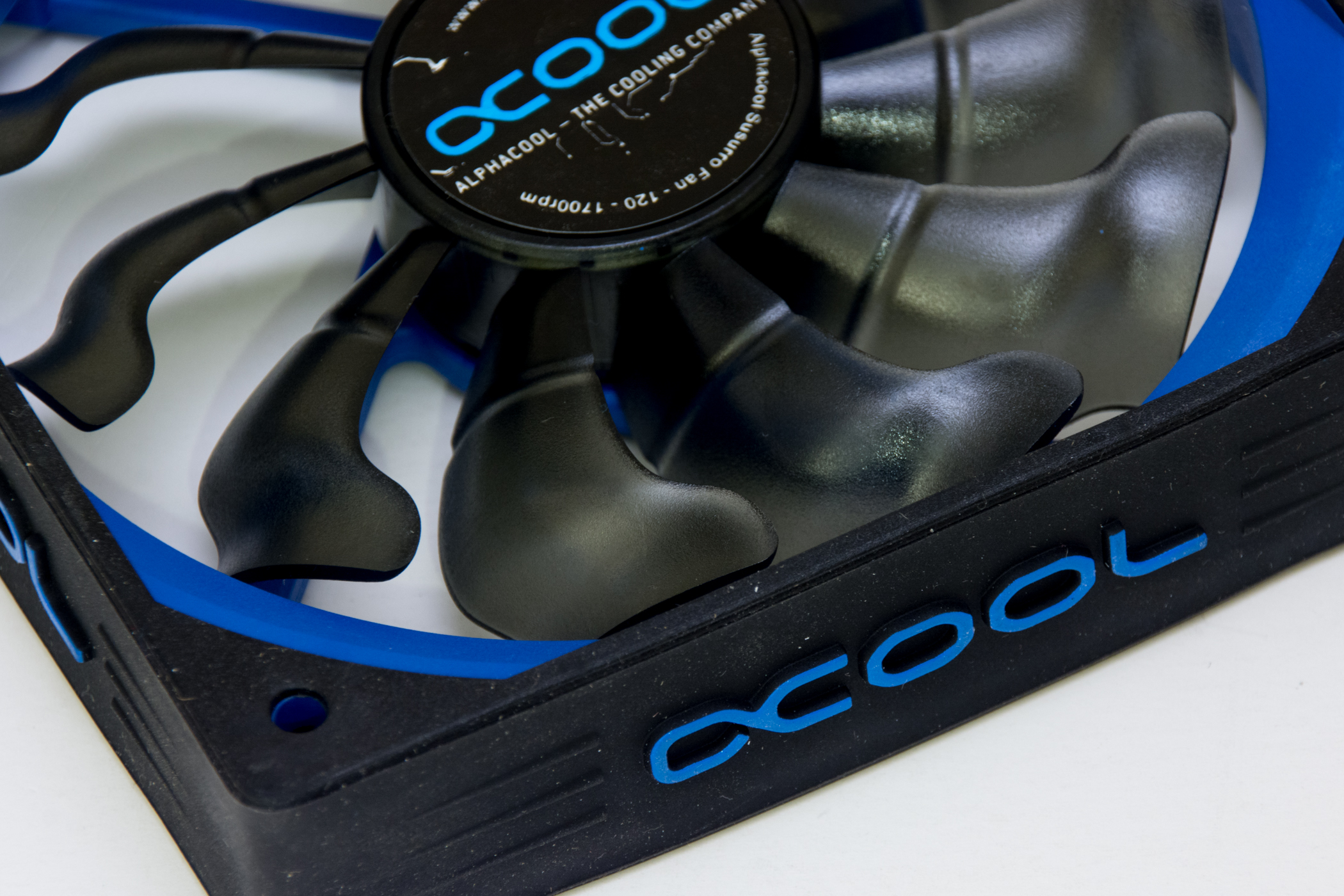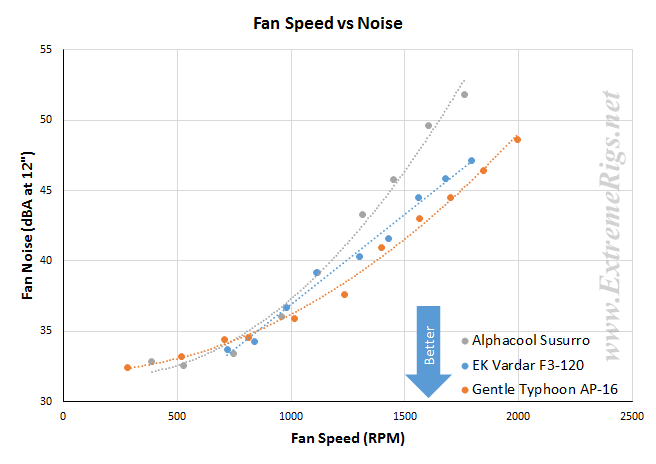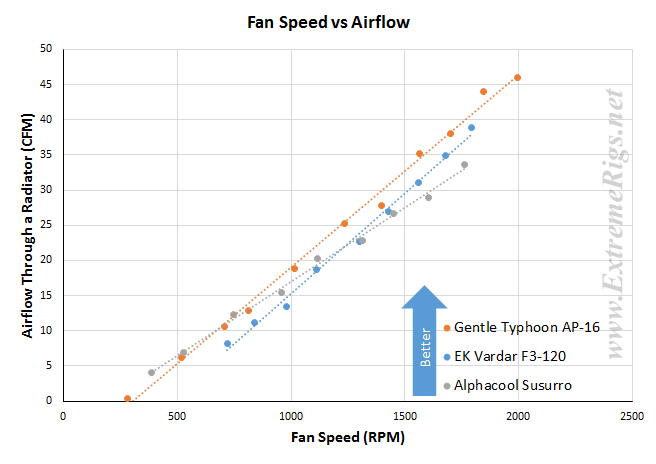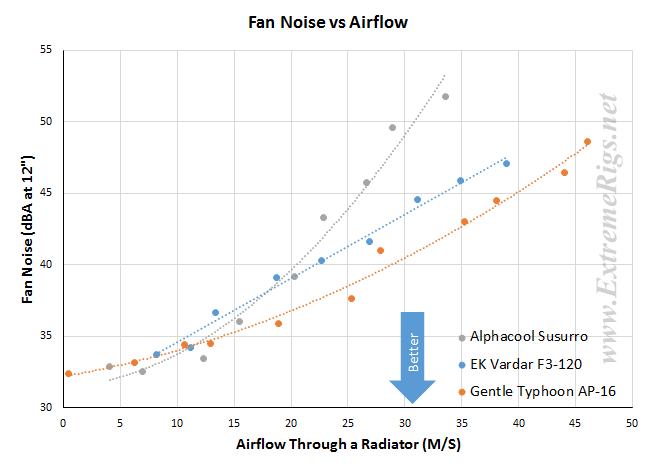The critical metrics that we care about for fan performance are quite simple – noise and airflow. For comparison I included data from EK’s Vardar 1850RPM fans, and Gentle Typhoon 2150RPM fans. All fans were tested with two mounted to the EK PE 240 radiator.
If you want to take a look at the original raw data – you can find it here and here. The fan speed was controlled by an Aquaero 6 in voltage mode for the 3 pin fans, but PWM mode for the Vardar. At each fan speed 5 noise measurements were taken corresponding to 45 degree increments from intake to exhaust. The results are shown here vs fan speed:
It should be noted that the noisefloor is about 32-33dBA. At these volumes I have to hold my breath and turn off any moving parts (pumps/fans) in the room and close all doors and windows.
This plot clearly shows that for the same RPMs that the Susurro fan is significantly louder than it’s competitors. At 1600RPM the “whispering” Susurro is louder than the 2150RPM Gentle Typhoon. That’s not a small amount – this fan is significantly louder, and it’s very noticeable to the ear when it’s running full speed.
The second metric we care about is airflow – how much air does the fan push? Here we measure 18 points for airspeed on a radiator using an anemometer. The EK PE 240 radiator is not very restrictive, so it models a good compromise between a restrictive radiator and a less restrictive chassis. Here we can see that again the Susurro at high speed simply is behind the competition. At low RPMs though it does start to do better. What is not shown in the data (which is an average of all 18 data points) however is that the Susurro has a much smaller deadzone than the Typhoon or Vardar.
Now that we have our two critical metrics we can combine them. Afterall fan speed doesn’t really matter itself, it’s just a proxy for noise or airflow. By plotting both metrics then we really get a feel for noise vs airflow performance:
This plot clearly shows then that for most of the Susurro’s useful range that it significantly louder than the competition when pushing the same amount of air. On the other hand at the low end of the range it starts doing well.
On to the summary!













